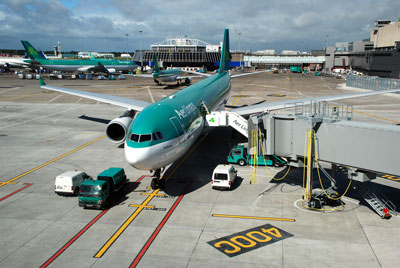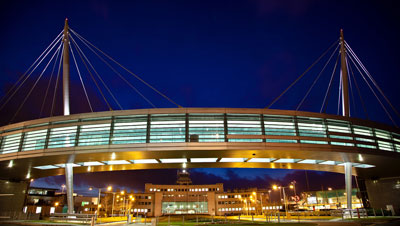Work begins on Dublin Airport €20 million modernisation project
- Like
- Digg
- Del
- Tumblr
- VKontakte
- Buffer
- Love This
- Odnoklassniki
- Meneame
- Blogger
- Amazon
- Yahoo Mail
- Gmail
- AOL
- Newsvine
- HackerNews
- Evernote
- MySpace
- Mail.ru
- Viadeo
- Line
- Comments
- Yummly
- SMS
- Viber
- Telegram
- Subscribe
- Skype
- Facebook Messenger
- Kakao
- LiveJournal
- Yammer
- Edgar
- Fintel
- Mix
- Instapaper
- Copy Link
Posted: 16 September 2015 | Katie Sadler, Digital Content Producer, International Airport Review
Work has begun on a £20 million modernisation project to improve aviation aprons at Dublin Airport for operator daa. The project which is due to be completed in 2019, forms part of a bigger scheme to modernise the airport which handles an average of 60,000 passengers and more than 600 aircraft movements every day making […]


Work has begun on a £20 million modernisation project to improve aviation aprons at Dublin Airport for operator daa.


The project which is due to be completed in 2019, forms part of a bigger scheme to modernise the airport which handles an average of 60,000 passengers and more than 600 aircraft movements every day making it Ireland’s busiest airport.
The aprons provide facilities for aircrafts to manoeuver, park and be serviced. Currently many of the aircraft aprons at Dublin airport are over 40 years old and require maintenance and upgrading.
Engineering consultancy company Idom Merebrook will manage a phased apron rehabilitation project to replace existing apron pavements before they become a business interruption or health and safety risk.
Many of the aircraft aprons at Dublin airport are over 40 years old
Javier Losada, Idom Aviation Manager commented: “This is both an exciting and challenging project for our team. All of our engineering works had to be phased to mitigate their impact upon the airfield operations. There are 57 airlines operational from Dublin and the airport is extremely busy.
“In order to minimise disruption to passengers there has been an extensive consultation period with airlines and airside operations to create a phasing strategy that both minimises impact and is also cost effective.
“The onsite engineering team has also had to phase works to interface with other ongoing engineering projects at the site, including taxiway rehabilitation, the installation of aviation fuel pipelines and enhancements to the runway.”


The apron network and infrastructure is required to accommodate a range of Boeing and Airbus models including the new generation Code F aircraft, and is based on providing capacity for the airport’s busiest times of passenger traffic at the height of season.
Before work commenced many issues such as access and egress routes, design of drainage and pollution control, proposed fixed electrical ground power infrastructure and the location of fuel hydrants for fuel pipelines were all considered.
Nigel Huish, Managing Director of Idom Merebrook commented: “Our team in Dublin will be striving to deliver an airfield infrastructure to support airlines and the airside operations at Dublin to smoothly facilitate passengers through one of Europe’s busiest airports.”
Once complete, the minimum anticipated life span of the new fully constructed apron pavements is 30 years, with 10 years before its first scheduled maintenance.

















